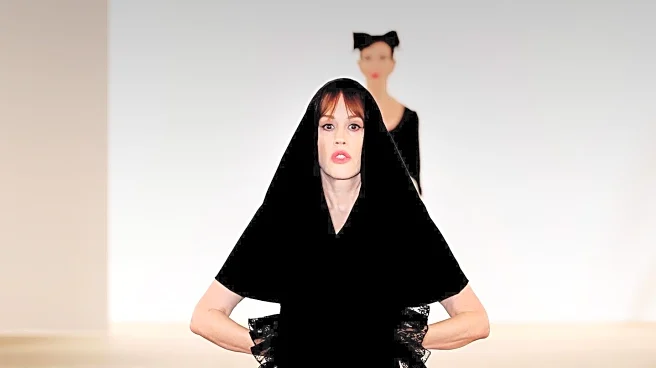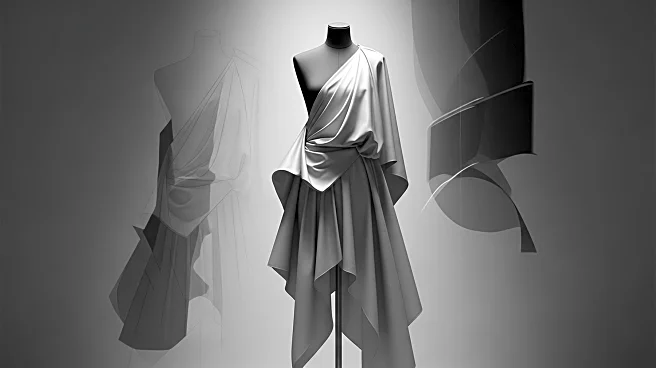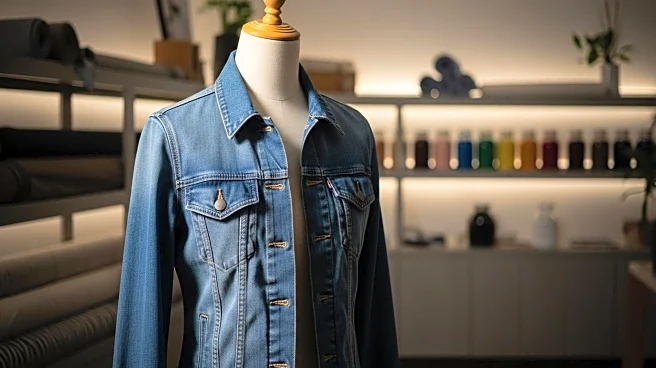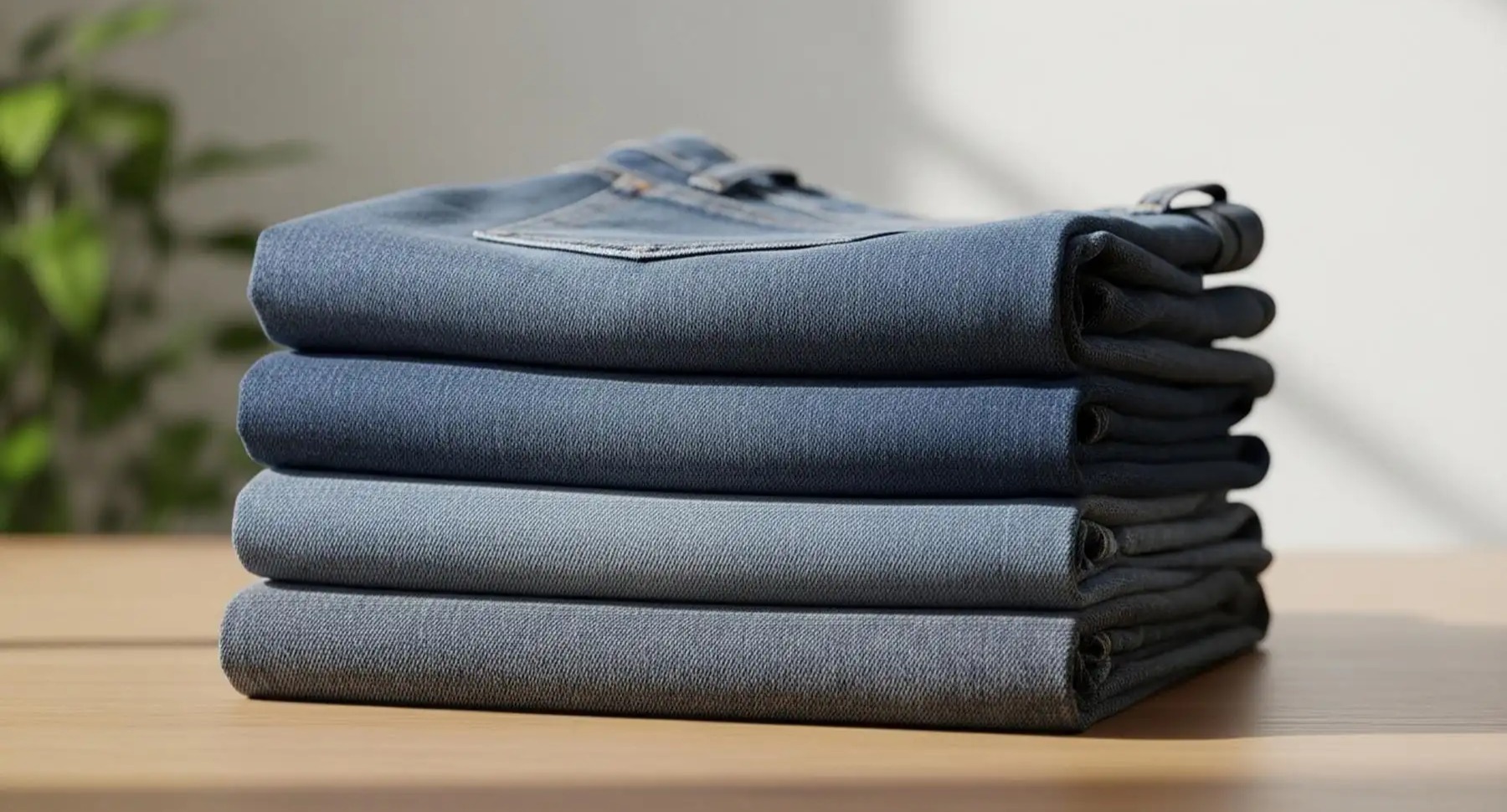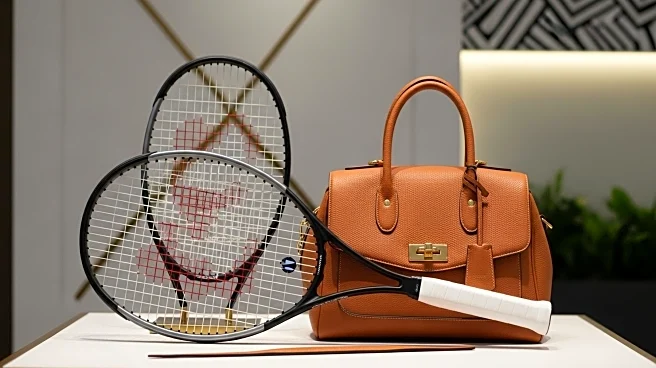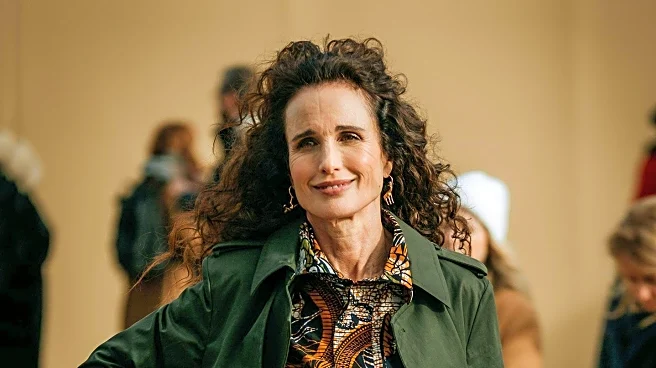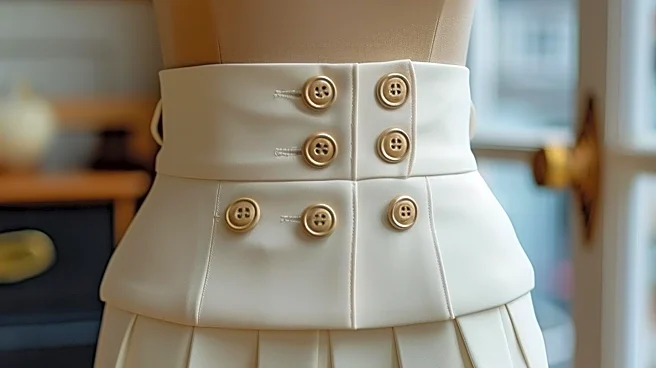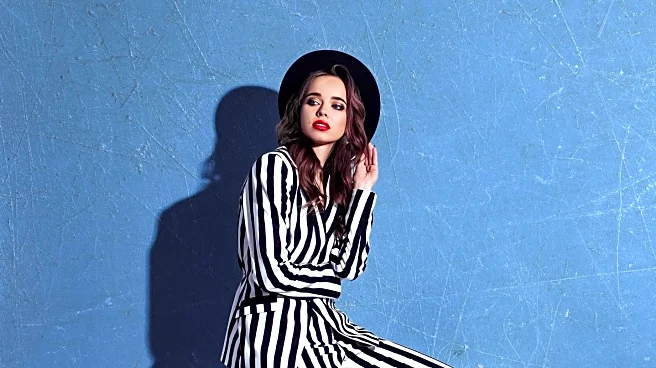What's Happening?
October brings a wave of new fashion launches, featuring a mix of trendy footwear and classic apparel. Notable releases include Hoka's Bondi Mary Jane Sneaker, which combines the elegance of a Mary Jane with the comfort of a sneaker, and is available in bold cherry red and classic black. Uniqlo's sister brand, GU, collaborates with luxury label Rohk for a collection that emphasizes neat tailoring and unisex designs. Other highlights include Miron Crosby's new boots inspired by content creator Lilly Sisto, and Reformation's collaboration with Nara Smith, offering dramatic silhouettes and faux fur details. These launches cater to diverse fashion tastes, from sporty to classic styles.
Why It's Important?
The latest fashion launches reflect evolving consumer preferences towards versatile and inclusive designs. The emphasis on gender-neutral and extended sizing options indicates a shift towards more inclusive fashion. This trend is significant for the fashion industry as it seeks to cater to a broader audience and adapt to changing societal norms. The collaboration between high-end and accessible brands also highlights a growing trend of democratizing fashion, making stylish and quality apparel more accessible to a wider demographic.
What's Next?
As these new collections hit the market, consumer response will likely influence future fashion trends and brand strategies. The success of these launches could encourage more collaborations between luxury and mainstream brands, further blurring the lines between high fashion and everyday wear. Additionally, the focus on sustainability and ethical production practices may continue to grow, as consumers increasingly prioritize these values in their purchasing decisions.
Beyond the Headlines
The fashion industry's move towards inclusivity and sustainability reflects broader cultural shifts towards diversity and environmental consciousness. These trends may lead to long-term changes in how fashion is produced and consumed, with potential impacts on global supply chains and retail strategies. The integration of technology in fashion, such as virtual try-ons and AI-driven design, could also play a role in shaping the future of the industry.

